Huawei Honor 6 Review
by Andrei Frumusanu & Joshua Ho on September 12, 2014 9:00 AM EST- Posted in
- Smartphones
- Huawei
- Android
- Mobile
- Honor 6
While we hopefully have a better understanding of the SoC's underlying architecture and specifications, let's take a look at how it performs in practice. The benchmarks are performed in the performance profile unless mentioned otherwise (No mention means there was little difference between the profiles).
We start off by our usual web-tests:
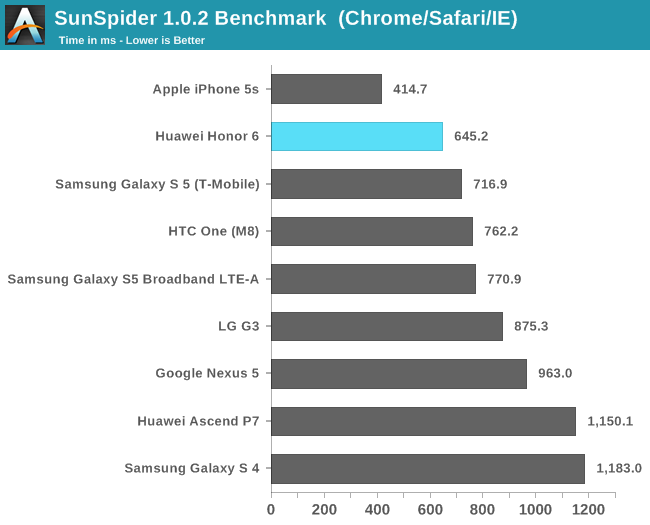
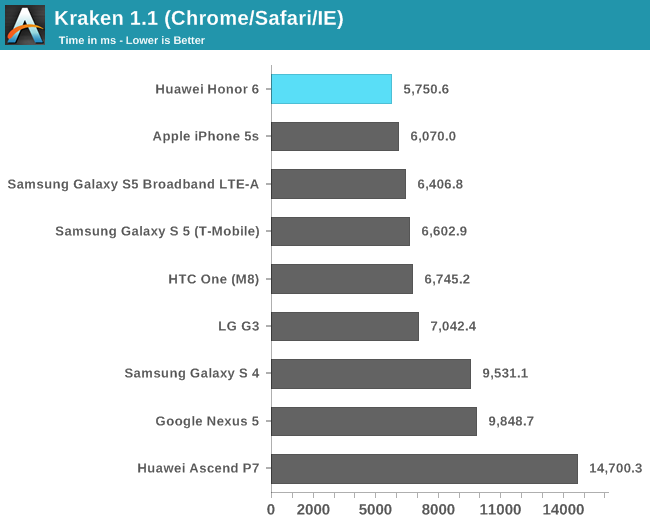

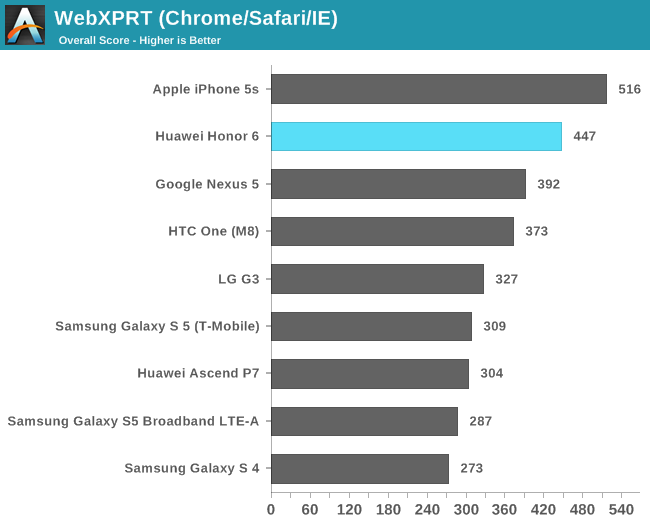
The Honor 6 performs outstandingly in our web benchmarks. It is leading all Android devices and even manages to outperform Apple's iPhone 5S in Google Octane and Mozilla's Kraken. This is a very interesting result that can be explained by one of big.LITTLE's core strengths: very low performance latency.
While traditional SoCs will try to scale the CPU frequency up while analysing a sample period of most often 50-100ms, while taking additional time to reach the maximum P-state, the GTS controlled Kirin 920 is able to do this at a maximum latency of only 26ms from idling, and in a best case scenario <16ms if the big cluster is already on a high frequency. The task at hand gets a higher residency time at full performance over traditional DVFS mechanics. Small and spiky loads such as Javascript test benches and web-page rendering are a perfect fit for big.LITTLE's design.
It is also to be noted that Cortex A15 SoCs have generally always performed very high on the web tests, the Exynos 5410 in the international Galaxy S4 was the first A15 design found in a smartphone and was able to achieve very similar scores when locked at high frequency. There is definitely also an architecture advantage to be found here in comparison to Krait based SoCs from Qualcomm.
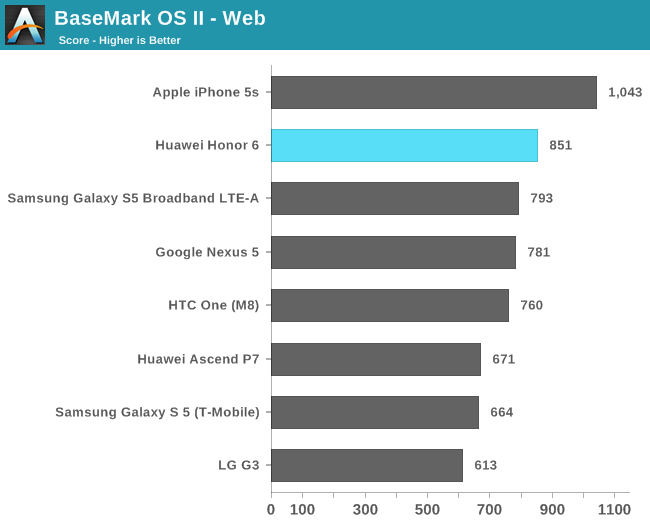
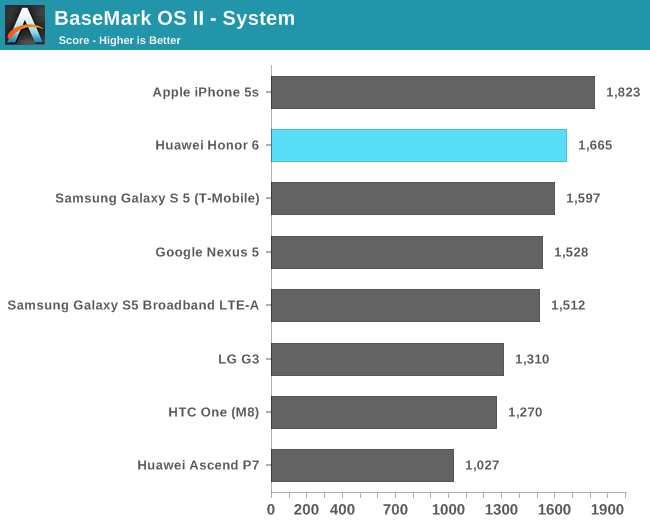
We see a similar picture in the CPU-intensive loads of BaseMark OS II - the Kirin 920 is able to outperform all other Android devices, but still lags behind the year old Apple A7.
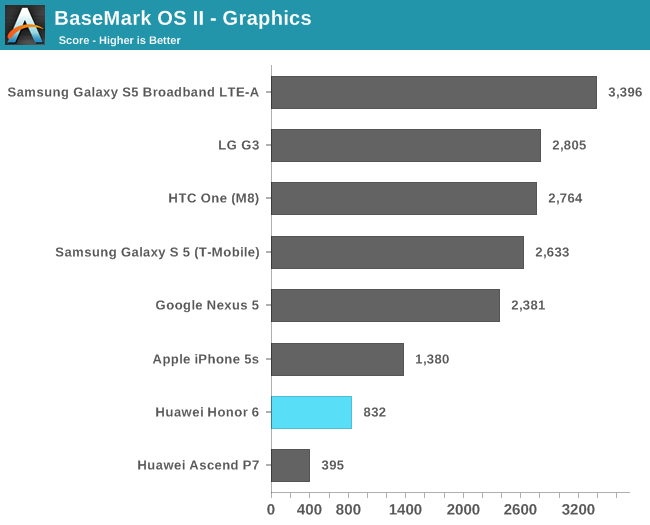
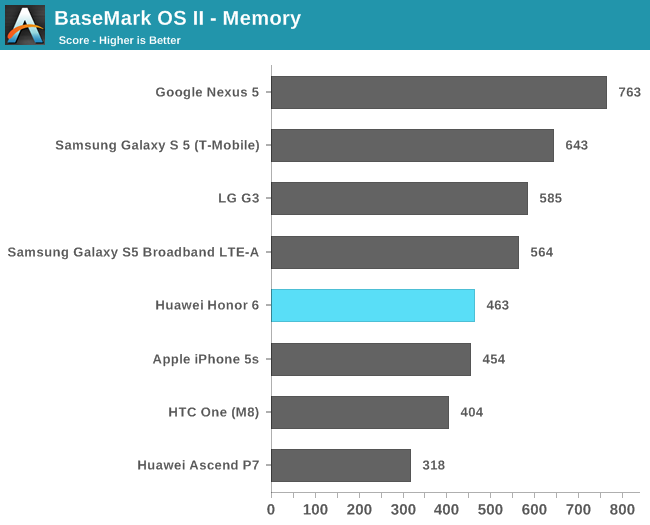
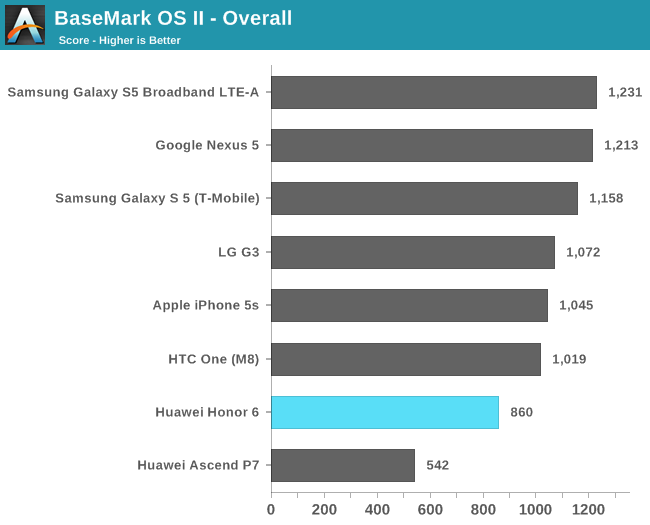
In the end, the abysmal graphics score of the Mali T628MP4 drags the final overall score on BaseMark OS.
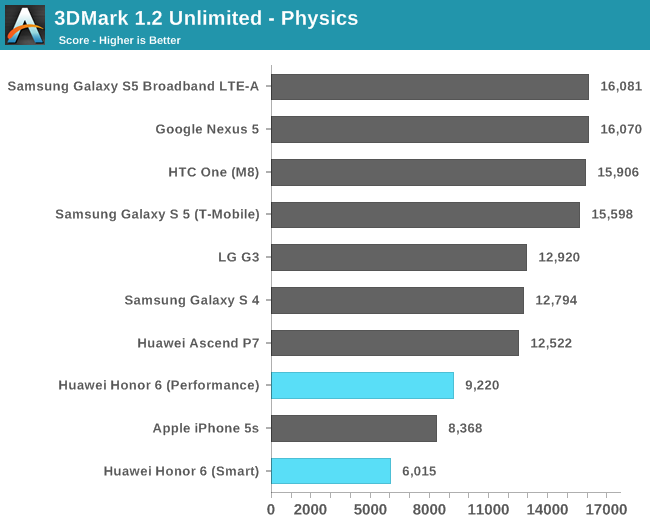
The physics test of 3DMark 1.2 Unlimited which is mainly CPU-bound sees a huge difference between the smart and performance profiles of the device. Because this is a rate-limited CPU benchmark and its load is evenly spread out over time, it provides a perfect case for lowering the HMP parameters and enabling the scheduler to migrate the process over to a big core. This is the largest delta I've been able to measure between the two main profiles that the Honor 6 provides.
Next, let's investigate the GPU performance in more detail.










59 Comments
View All Comments
imaheadcase - Monday, September 15, 2014 - link
By the time you need to replace the battery you will be getting a new phone anyways..so its a moot point.Alexey291 - Monday, September 15, 2014 - link
6 months in case of one of my phones? Damn thing expanded and basically lost about 50% of its capacity (I'm being generous here). The amount of effort it took to get it through warranty process (leaving me without a phone in the meantime)... Because you know "its still working isn't it?"Never again tyvm.
Stuka87 - Monday, September 15, 2014 - link
"Takes up literally no space"Seriously? Do you understand what the meaning of "literally" is?
Alexey291 - Monday, September 15, 2014 - link
I would have long since edited it to "literally no -extra- space" (because you know that would have worked as an exaggeration and that is pretty much what I wanted to say) but alas the comment system here is poop :)But you did have a point to make didn't you? Oh no you're just being an idiot. Fair enough.
semo - Sunday, September 14, 2014 - link
So just the planned obsolescence then. Why isn't this considered outrageous? Maybe because marketing has convinced users that points 1 and 2 are actual problems (as Alexey291 has pointed out, that's not the case). Maybe you can't really make a oh la la looking phone with a removable battery like the HTC One but we don't all want or like such devices.Why can the auto industry cater to such a large number of wants/needs but the phone industry can't? They only make the same looking huge phones with sealed batteries, no Qi, no expandable storage, single SIM only, etc... It feels like there is no choice unless you want something practical and pocket friendly (a proper HTC Sensation successor would be nice)
Alexey291 - Monday, September 15, 2014 - link
Hear hear!Ethos Evoss - Sunday, September 14, 2014 - link
jesus chris people GET OVER with replacing battery stupidness ! seriously .. you looking only what that phone doesn't what it doesn't have .. it has powerfull 3000 batt jesus christ people grow upsemo - Sunday, September 14, 2014 - link
Why is that such a big problem for you? There's plenty of phones for you to choose from if you must have a sealed battery. Why can't the rest of us have a choice?Alexey291 - Monday, September 15, 2014 - link
that's until that cheap but (supposedly) powerful 3kmah battery swells and damages the phone's internal structure. Loses 50% of its original capacity. All in under 6 months.And before you say "that never happens" it happens very damn often especially in Huawei and Xiaomi phones >.>
semo - Monday, September 15, 2014 - link
And don't expect the likes of Zerolemon and Anker to offer a better/bigger battery as they generally don't support non user replaceable batteries (most users won't bother unless they can just pop the battery in).